The exhibitions stands and booths are an important part of a business’s marketing campaign. When a business is participating in an exhibition or a tradeshow their booth helps them build a first good impression to a wider and highly targeted audience. As the Dubai, Abu Dhabi and Sharjah are renowned for large events, exhibitions and tradeshows, businesses operating in UAE are well-aware of the importance and benefits of participating in such events. Such events and tradeshows attract highly relevant audience from within the country and all around the world. This can be a game changer for any business, you can strengthen your networking, get new customers and suppliers and enhance your brand identity.
Therefore it is extremely important that your exhibition stand delivers the desired features, functionalities and aesthetics that help your brand stand out of the crowd. It will your exhibition stand’s first look that will draw audience towards your booth. The look and feel of your exhibition stand very much depends on the design and the materials you are using. The design could be great but if the materials are not good enough, you will never be able to achieve the standard and quality you want. In this blog we will discuss how you can choose the right materials for your exhibition stand. It is crucial to understand that only a professional exhibition stand builder could provide you with the right materials for your stand or boot.
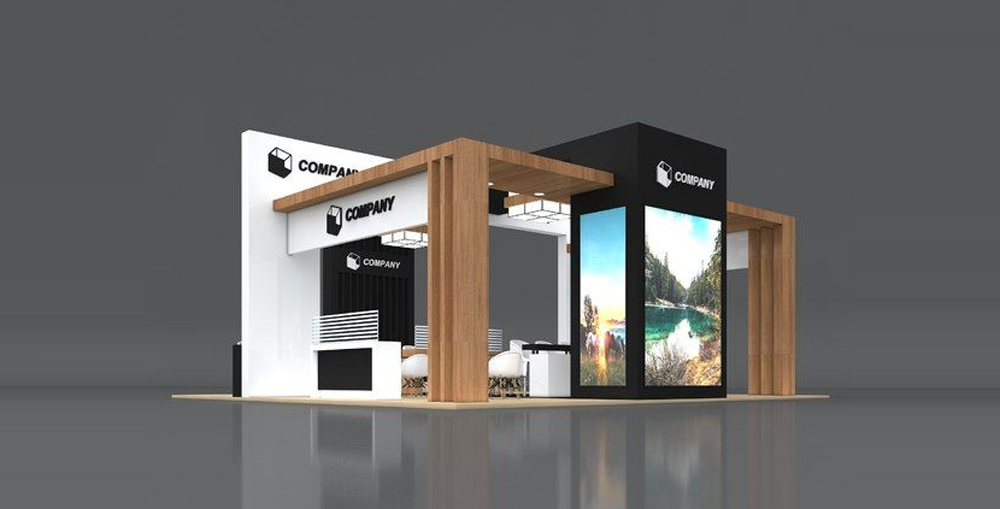
How to Choose the Right Materials for Your Exhibition Stand?
What are the Most Common Materials Used for Exhibition Stands?
Before we discuss the important factors you should consider when choosing materials for my exhibition stand, it is also important to learn about different materials that are commonly used for exhibition stand and booth designing. Here are the most common materials used in exhibition stand building process:
There are three major sections of an exhibition stands, the flooring, booth structure and the final one is the finishing of the stand.
Flooring
The flooring of an exhibition stand usually done with three materials:
- Carpet
- Melamine
- Vinyl
You should make sure the flooring material you are using is appropriate and consistent with your exhibition stand design and theme.
Carpet
The carpet flooring usually directly installed/placed on the venue floor which is usually concrete. The carpet usually comes in two types, Tiles and One Piece (apparently). The tiles come in 1m x 1m size with a variety of color and texture options. The One Piece carpet role comes in 2m x 3m size with a variety of colors and texture. It is important to make sure the flooring team have experience and expertise to conceal the joints when using a One Piece carpet roles for more than 3m floor. Custom carpet are also used, with customized texture and colors, usually business print their branding on such carpets.
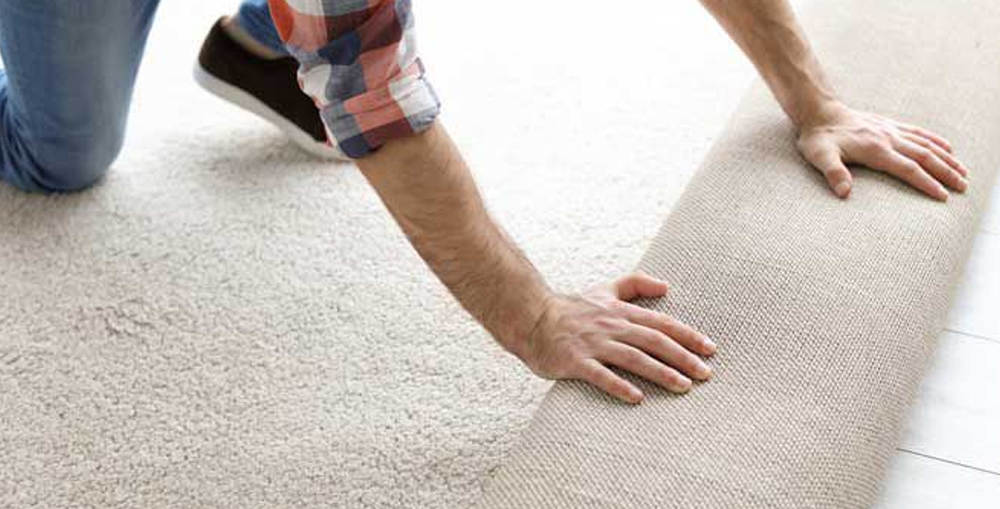
The carpet usually comes in two types, Tiles and One Piece (apparently)
Melamine
The melamine flooring is usually slightly raised from the ground and is a better choice to conceal the electrical connections and it also gives a premium look to your exhibition stand. There are some standard colors for melamine flooring, such as white, grey and black. The white is one of the most common and is also widely available hence it is the most cost-efficient choice. However, there are many more colors available which can be used. Furthermore the businesses can also get custom colors to match with their branding or with the theme of their exhibition stand. Melamine flooring also comes in a premium wooden grain look, which is also expensive. There are tons of options for different colors and finishing.
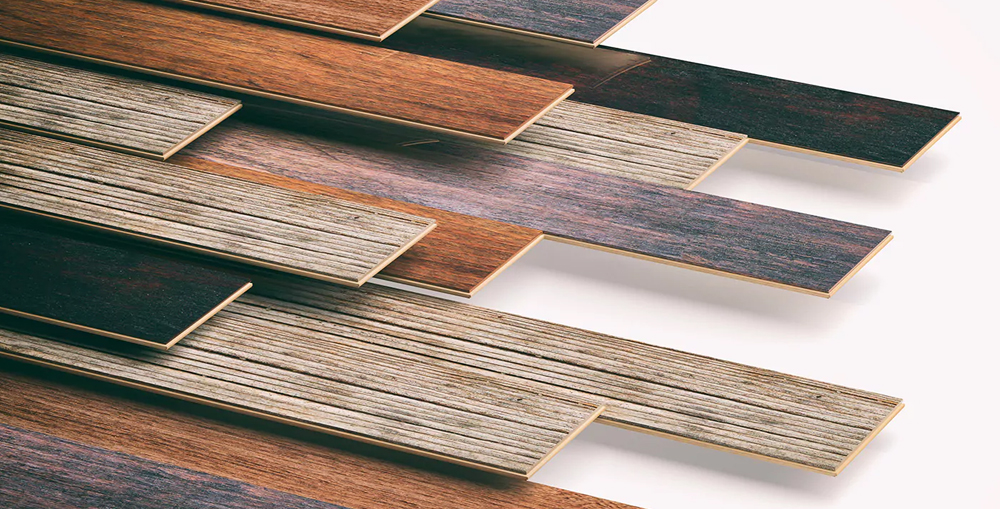
The melamine flooring is usually slightly raised from the ground
Vinyl
The vinyl flooring is the most cost-efficient flooring, it comes in two forms, vinyl rolls or vinyl planks. Both the rolls and planks are applied directly to the venue flooring, hence if there is electric cables or internet cables, those will remain visible and would require additional covering. The vinyl flooring comes in different colors and textures, however, the texture is printed on a surface which is not actual texture, but if you chose a good vinyl flooring material the illusion will make it look real texture. There are three most common patterns for vinyl flooring, timber pattern, grass pattern and the stone pattern.
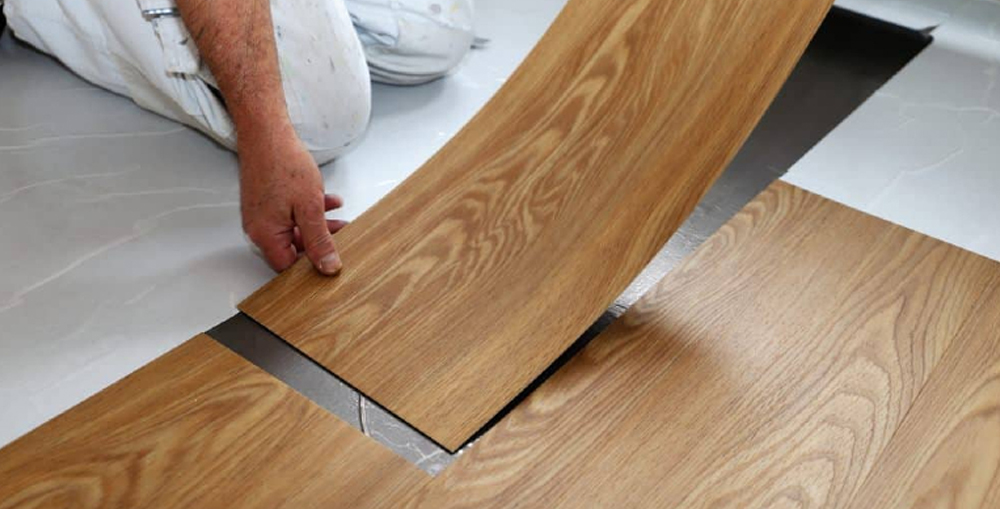
There are three most common patterns for vinyl flooring, timber pattern, grass pattern and the stone pattern
Structure
The structure of the exhibition stand can be made up of several materials usually it is a combination of 3 to 5 different materials but it could go up to 10 different materials as per the design and needs.
- Chipboard/MDF
- Plywood
- Aluminum
- Glass
- Acrylic
The structure is the most of your exhibition stand, it is all that is above the floor, forming the architecture, space, storage, displays, walls, siting, etc. and everything. That is where most of your expense goes.
Chipboard/MDF
The MDF is one of the most widely used material in exhibition stand and booth designing. It is tremendously popular not only in UAE but all around the world due to the fact that it is very cheap, easy to work and easy to source. Since the raw MDF doesn’t have appealing look, it is always used with paint or vinyl finishing.
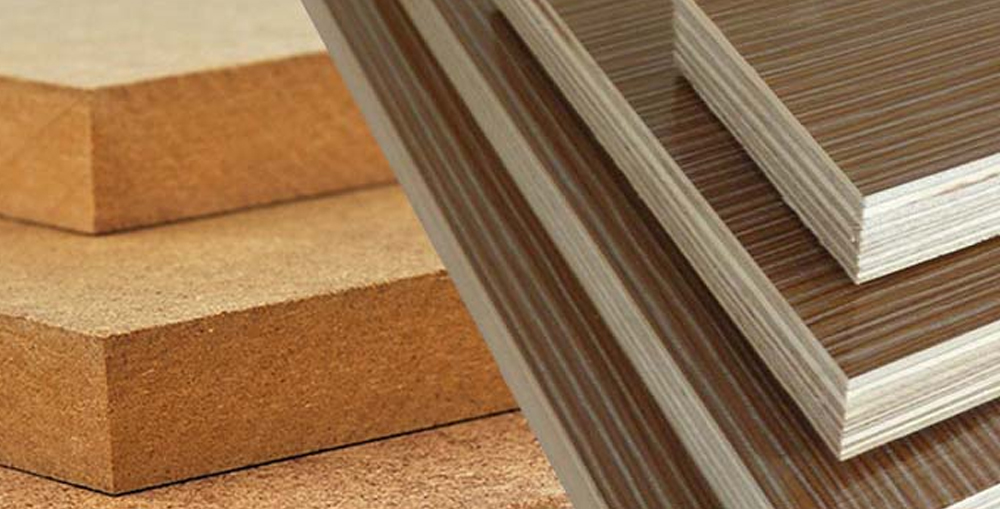
The MDF is one of the most widely used material in exhibition stand and booth designing
Plywood
The plywood is much harder than the MDF, and it also has more natural wood-like finishing, which makes it ideal for structural strength. It is slightly more expensive than the MDF but it can be left raw, without any paint or vinyl covering. Which can make it cost-efficient. Furthermore there are several designs and colors available.
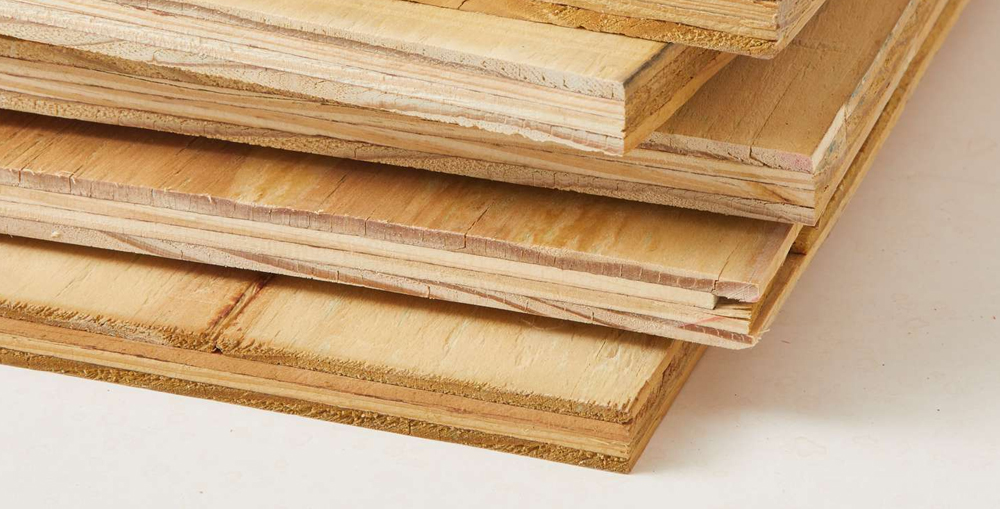
The plywood is much harder than the MDF, and it also has more natural wood-like finishing
Aluminum
Aluminum is a strong, lightweight, and cost-effective structural material used to build the structural frame of the exhibition stands. It is not only used alone, but it can be used with MDF, Plywood, Timber, and other materials as well. In some cases the shiny raw look of aluminum frame can also blend in with the design, but most of the time it is concealed with paint, powder-coating or spray-paint.

Aluminum is a strong, lightweight, and cost-effective structural material used to build the structural frame of the exhibition stands
Glass
The glass is also very popular with exhibition stands and booths, as it is easily available and very cost-effective. The glass is usually used at windows, doors, and shelves and sometimes used for branding purposes. It requires special skilled labor to work on the glass and also require special handling and care during transportation. Usually thick glass is used which is hard to break or shattered.

The glass is usually used at windows, doors, and shelves and sometimes used for branding purposes
Acrylic
Acrylic is used as alternate to glass to optimize the cost. The acrylic is easy to work with, very cost-effective, and it can be cut in complex shapes using specialized CNC machinery. The acrylic is widely used in UAE as it is easy to source and best option for customization. However, it is not as that transparent as the glass is, however, there are some premium acrylics which can give almost glass-like finishing.

Acrylic is used as alternate to glass to optimize the cost. The acrylic is easy to work with, very cost-effective
Finishes
Finishes are the most important part of exhibition stand building. It is what has been seen by your audience and it is what attracts them towards your exhibition stand. Here are some common finishes of exhibition stands:
- Raw: The raw finishes means the actual unpainted surfaces of the materials used. It requires a critical sense of designing and mastery to play with raw finishes and to make them attractive.
- Roll Paint: The roll painting is one of the most commonly used and highly cost-effective finishing for exhibition stands and booths and it allow choosing a virtually any color you want.
- Printed Vinyl Wraps: The digitally printed vinyl wraps are one the most common and cost-effective method to print your art-work or branding on the walls, large surfaces and anywhere you want.
- Lamination/Laminate: The lamination or laminate is a hard-wearing thin plastic sheet which is pasted on the surface and gives it a premium shiny look and are much more durable than the roll paint.
- Spray Paint: When more glossy and premium look is required, the spray paint is the best option to go for. It is highly cost-effective and it can offer virtually any color you want.
- Acrylic: The acrylic is used to build signage and can be used for both illuminated and non-illuminated signage. The Acrylic signs are a great way to attract more people.
- PVC Boards: The PVC boards are a great choice if you need to replace the art-work, branding or promotions on more frequent bases. It is very cost-effective and doesn’t require special skills.
- Vinyl Cut Lettering (VCL): The Vinyl Cut Lettering or VCL is a very common and most widely used method for logo, letters and branding. It is very cost effective and can be used with or without illumination.
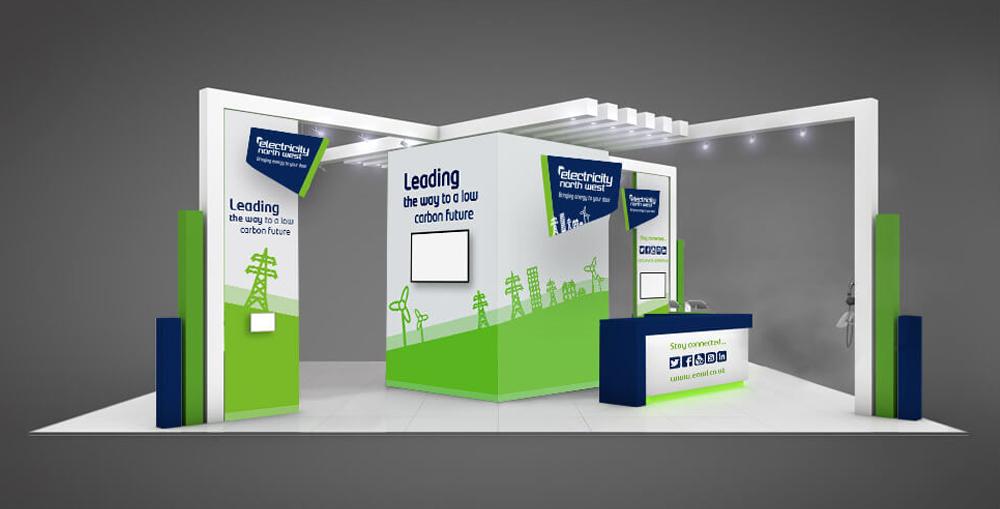
It is what has been seen by your audience and it is what attracts them towards your exhibition stand
There are several other materials that can be used in the structure of an exhibition stand, however, their application is limited and they are expensive. For example, the steel is also used for large pavilions and multi-story booths as it offers great strength and reinforcement. Usually galvanized or powder-coated steel is used as the raw steel doesn’t look good. Mirrors are also used for their reflective properties and mirrors are very good at enhancing the look and feel of a booth by making them look more spacious. Solid timber, pine and hardwood are also good for certain industries.
However these materials require highly skilled labor to work with and are also tend to be more expensive than the MDF or Plywood. The PVC panels and various cladding materials are also used for finishes which are expensive and in some cases hard to work with. An exhibition stand, booth or kiosk is always built using multiple materials. Sometimes a materials is selected for its strength or other features and sometimes for its looks and feels. However, the cost, strength, and the look and feel all are equally important while choosing a material for your exhibition stand.
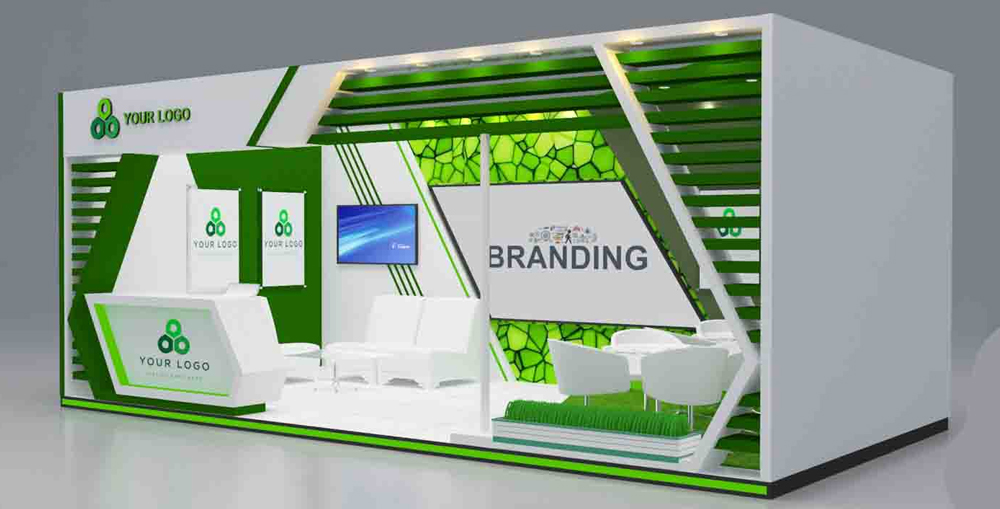
The cost, strength, and the look and feel all are equally important while choosing a material for your exhibition stand
What factors should I consider when choosing materials for my exhibition stand?
There are several factors that matters when it comes to designing a perfect exhibition stand or booth for your business. While selecting materials you should make sure that your exhibition stand meets your needs and goals, the materials are cost-effective, the skilled labor is available (at reasonable cost), and these is no logistic challenge. There are a variety of materials available in the UAE which you can choose from and this is what make it so confusing and frustrating. Here are some key factors that you should consider while choosing the right material for your exhibition stand or booth:
- Cost and Budget: Bespoke 3D cladding or brushed aluminum is amazing, but extremely expensive. The MDF is cheap but does it fulfill your need? You should always attain a balance between your need and desire. It is good to keep your initial cost estimation 10 to 15 percent less than your budget.
- Exhibition Theme: Make sure you align your material choice with the exhibition theme, for example, if the exhibition is focusing on reusable and sustainable materials, then you should chose as many of such materials as you can while ensuring your cost remains in your budget and you doesn’t compromise on the aesthetics.
- Exhibition Venue: If your exhibition is in indoors then you can easily choose from multiple options, but if your exhibition is outdoor, either partially or fully then you should be very careful about choosing the right materials which can be used in outdoor.
- Reusable Design: If you will have to reuse your exhibition stand in multiple exhibitions then you should choose the materials that can be reused with minimum waste. In such case you should use very durable materials and make sure assembling and disassembling will not affect the materials and certain parts of your exhibition stand.
- Your Goals: Your exhibition stand’s aesthetics will build its own personality which will help you stand out of the crowd. You should chose the design and materials carefully which align with your business goals as well as the event goals.
- Branding: For any exhibition stand it is a must to have feature that it represents the brand personality and branding of your business. The visitors should be able to identify your brand in first glance if they know your brand.
There are several other things that you should also consider, for example, if you are going for a modular design, you should be careful in choosing the materials and ensuring they are of good strength. Because mostly the modular designs are reused many times, so they will have to assemble and disassemble many times. Furthermore the transportation should also be considered, for example, the glass materials require special transportation. Therefore you should always attain a balance between the quality, look and feel, strength and the cost of the materials you are using.
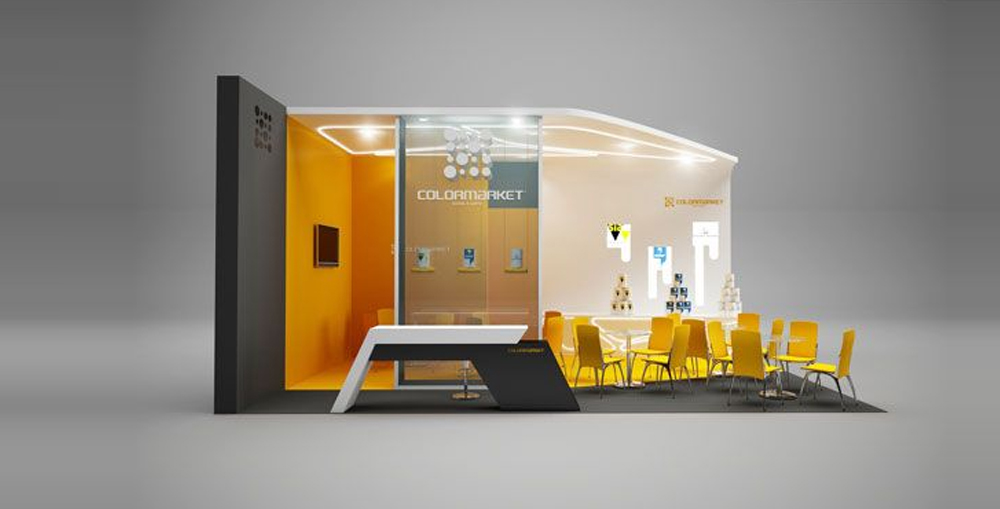
What factors should I consider when choosing materials for my exhibition stand?
Conclusion
Being a leading exhibition stand and customized booth designing company in Dubai, we always face customers who overthink about materials and doesn’t know how they should choose the right one. Obviously not every customers is familiar with all the nitty-gritty of the exhibition stand building materials and above all there are tons of different options available in the market under different brandings. Which often confuse them and they start getting concerned about the materials which should be used for their stand building. In this blog we have provided a brief overview of different materials which are used for exhibition stands, booths, and kiosks.
The most important thing to consider while selecting your materials is your goals and your budget. It is best to get professional help and provide them as much details as you can about your goals, vision and needs, and also a clarify your budgetary limitations. At RSI Geeks we always strive to provide the best service to our customers, if you want to learn more about exhibition stand materials and designing process or if you want our help to build a spectacular exhibition stand for your business, please feel free to contact us through our Contact Us page or leave a comment in the comment box below and we will get in touch with you soon.
